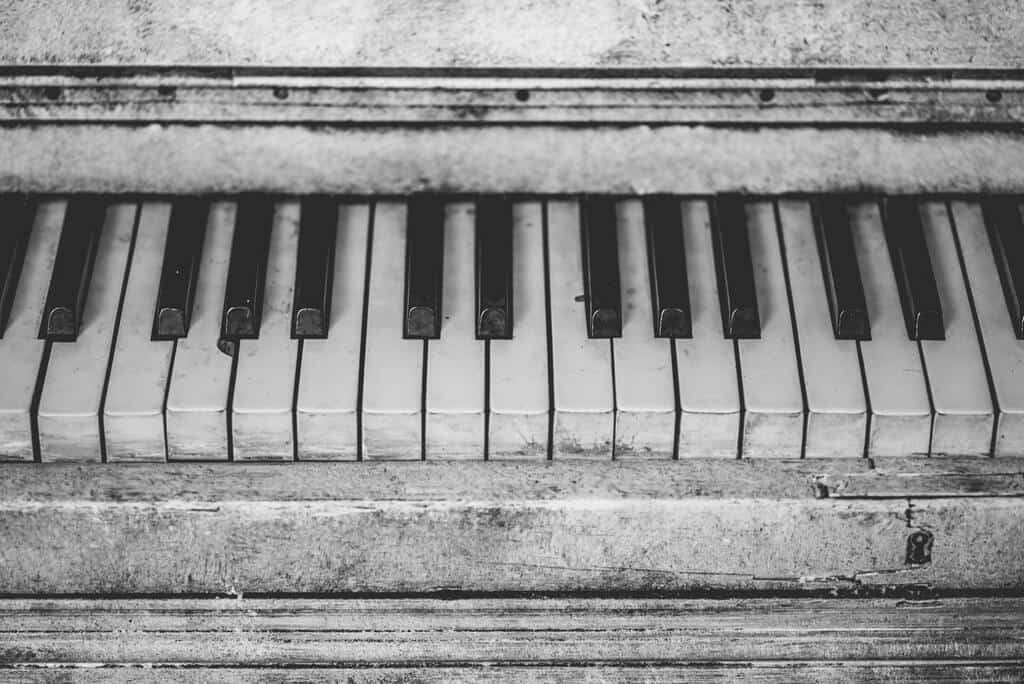If you’ve been studying music for even a short while you’ll have noticed that all the musical notes are written on one five lines. This is called the staff or stave. You will also have come across a symbol called a clef. By far the most common clefs are the treble clef and the bass clef. However, there are other types of clefs, which are less frequently used. These include the alto clef and the tenor clef and it’s the latter that is the subject of this article. These clefs are very important for any musician to understand as they are a key part in understanding written music. Let’s take a look at the tenor clef, how to read it, where it is used in music and compare it to other more common clefs.

What is the tenor clef?
What is tenor clef? The tenor clef is a lesser used clef that forms an essential part of music theory and notation. For most musicians, the first clef they learn is the treble clef and this is soon followed by the bass clef.
More advanced musicians will start to learn the alto clef, which is most commonly used in viola and vocal music. Finally comes the tenor clef, which is even less common than the alto clef. The tenor clef is rarely used in piano music, however, learning how to read tenor clef and understanding how it functions is an important aspect of advanced music theory.
 The tenor clef symbol is an example of a C clef. This means that wherever you directly place the middle of the clef will be middle C. The middle of the tenor clef is always placed on the fourth line up from the bottom of the staff. Alto vs tenor clef is often a source of confusion as they are both the same symbol. Alto clef places middle C on the middle line of the staff.
The tenor clef symbol is an example of a C clef. This means that wherever you directly place the middle of the clef will be middle C. The middle of the tenor clef is always placed on the fourth line up from the bottom of the staff. Alto vs tenor clef is often a source of confusion as they are both the same symbol. Alto clef places middle C on the middle line of the staff.
This means that with the tenor clef the fourth line up from the bottom of the staff is middle C. It gives instruments the flexibility to play notes above and below middle C without having to use lots and lots of ledger lines.
How to read tenor clef noted on the piano?
The piano notes of the tenor staff are as follows.

Notice how once we reach the note ‘C’ the musical alphabet starts again.
As you can see above, every note is either on a line or space. If you separate these out and come up with mnemonics and/or acronyms to help you memorize the patterns you’ll find that your learning process will be greatly enhanced.
Best ways to memorize the tenor clef notes on piano
As with other clefs the best way to memorize the tenor clef is with helpful and memorable mnemonics. Here are the notes for the lines of the tenor clef notes on the staff:

A handy tenor clef mnemonic device to help you remember the notes is:
Dogs Fight All Cats Eagerly
Notice how the first letter of each of these words is the letter name of each of the lines of the tenor clef staff.
Here are the notes for the spaces of the tenor clef notes on the staff:

A possible mnemonic device here is:
Every Good Boy Dances
You’re welcome to come up with your own mnemonics and acronyms to help you remember the tenor clef notes.
Here is a brief overview of the tenor clef ledger lines you will notice that tenor clef notes above staff and below also follow an easy to follow alphabetical order the same as the tenor clef notes on staff.

What are the tenor clef instruments?
What instruments use tenor clef? Tenor clef is principally used for the upper registers of instruments that ordinarily use the bass clef. Therefore, being able to transcribe the notes from tenor clef to bass clef is an important skill for many musicians. Its purpose is to enable composers to avoid using lots and lots of ledger lines, which can be difficult and confusing to read.
The word “tenor” can actually refer to different things in music. It is a type of male singing voice and is the highest male chest voice type. Tenor instruments can also be part of a sub-group of certain musical instruments. For instance, there are tenor trombones, tenor horns, and tenor saxophones.
Typically, the tenor clef is used by the following instruments:
- Bassoon
- Cello
- Double bass
- Trombones
Other than the bassoon, these instruments the main clef used is usually bass clef. Only when the composer wants these instruments to play high pitches would the tenor clef be used. This is mostly to avoid excessive ledger lines.
You will also see from the above example that the tenor clef key signatures look a little different. The circle of fifths always remains the same no matter what clef you are using. The positioning of the sharps and/or flats on the grand staff will be different in the tenor clef compared to the treble or bass clef.


Tenor vs Alto vs Treble vs Bass clefs
The best way to get proficient in reading and switching between clefs is to be familiar with their landmark notes and become familiar with the position of middle C for all clefs. To help you with this use this handy table form Skoove.

Now you know how to get by if you find yourself in a situation where you need to read the tenor clef. Learning the tenor clef helps develop your overall skills as a musician and gives you greater insights into concepts such as orchestration, instrument registers and pitch. There is no better way to learn music theory than to incorporate it into your playing and online piano lessons with Skoove are the perfect place to do this. Sign up for your free trial today!
Explore all types of clefs
Author of this blog post:

Sam Girling is a percussion and piano teacher, writer, an researcher based in Münster, Germany and Auckland, New Zealand. He has performed extensively in New Zealand and Europe, lectures on a variety of music history and theory topics, and has published several academic articles and musical scores. Sam has taught music in a variety of contexts, from primary schools through to university level.
Published by Lydia Ogn from the Skoove team














